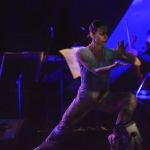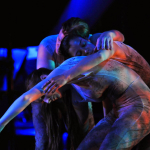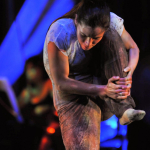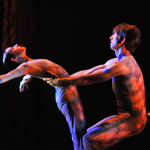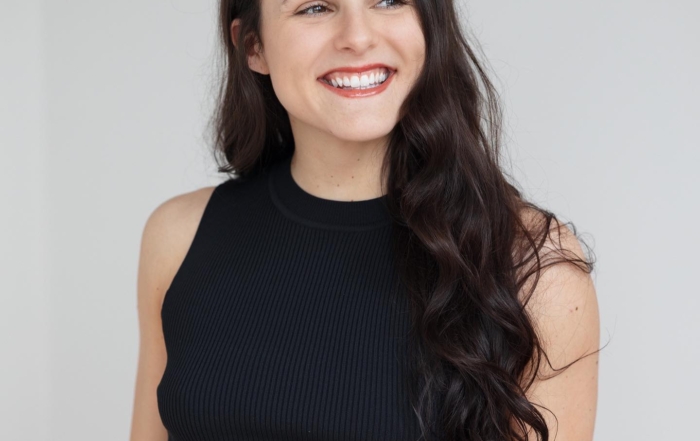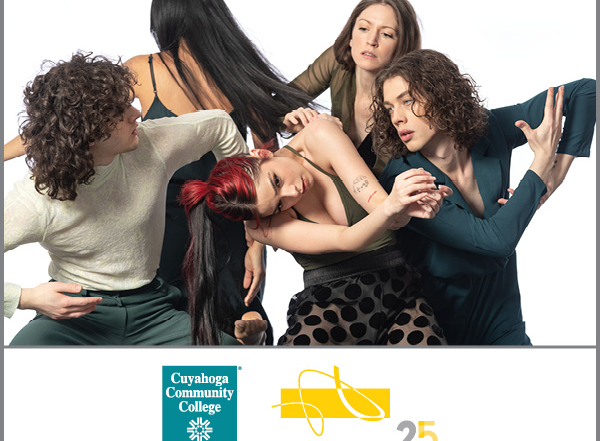Project Description
Video
To view the video, use password groundworksview
About the Work
Tan Dun’s Ghost Opera, with its abundant energy, high contrasts and rhythms – has wonderful elements for dance. It is also incredibly theatrical, and very much a performance piece for the musicians. Tan Dun asks the musicians to move around the stage, vocalize and extend their playing to include paper, stones, cymbals and even bowls of water. In interviews about Ghost Opera Tan Dun talks about his early experiences with Nuo Culture growing up in the South of China, which is an ancient folk dramatic art involving Song, Dance and Ceremony dating back to the 16 and 17th centuries BC. The meaning of the Chinese character NUO is a patterned step to drive away evil and the Nuo Opera has evolved from a sacrificial activity or ceremony to worship gods and ancestors, enacted by a priest or shaman. It became a masked drama based on historical events or folk stories to establish ties and norms. Although contained now mostly to the Southern provinces Nuo Opera is still performed in cities and towns as a kind of seasonal ritual symbolizing wishes of sacrifice to ancestors, praying for blessing and dispelling evil. The performers wear elaborate masks. In Nuo culture masks are regarded as symbols and carriers of gods or spirits. Tan Dun talks of everything in Nuo having a spirit. The spirits of nature, time, place and culture are all present in his composition. This was the jumping off point for thinking about the choreography. Tan Dun describes his concept for Ghost Opera this way: “Ghost Opera is a piece using very ancient theatrical methods to approach a modern idea, linking the different kinds of territory across media and across lives, and across decades, and let all those souls talk to each other.” In his score Tan Dun references both eastern and western music and cultural traditions, with passages from a Chinese folk song, a Bach prelude, as well as quotations from Shakespeare’s Tempest. As previously mentioned he also incorporates different elements into his score – water, stones, metal and paper. GroundWorks approached the work as a kind of meeting place, a landing of spirits of all kinds – spirits from the past, present, and future, from east and west culture, from nature and technology. As such the performance, our stage, is a kind of metaphor for our brief time in life, where we come from and what we bring to each other.
Photography
Related Blog Posts
A Look Back at GroundWorks’ 2024 Winter Dance Intensive
By Steve Sucato GroundWorks DanceTheater's 5th Annual Contemporary Dance Winter Intensive proved once again why it is the
GroundWorks’ new Discovery Residency Initiative Gives Local Choreographer a Career Leg-Up
By Steve Sucato Morgan Walker’s burgeoning choreographic career got another boost recently when she became the second dancemaker to receive an invitation to participate in GroundWorks DanceTheater's new Discovery Residency program for
Tri-C® Creative Arts Center Welcomes GroundWorks as a Professional Company in Residence
CLEVELAND — The Cuyahoga Community College (Tri-C®) Creative Arts Center of Excellence welcomes GroundWorks DanceTheater as a professional company in residence at its Metropolitan Campus beginning January 10,
GroundWorks’ Fall exCHANGE Program brought Professional Movement Concepts to Students and those Students to the Stage
By Steve Sucato One of GroundWorks DanceTheater’s most popular core education programs, exCHANGE, gives students a window into the same
New ‘Discovery Residency’ Initiative Welcomes Former GroundWorks Dancer Maddie Hanson
By Steve Sucato In Maddie Hanson's brief time with the company during the 2021-2022 season, she left a lasting impression. None more so than on GroundWorks DanceTheater Founding Artistic Director David Shimotakahara.


